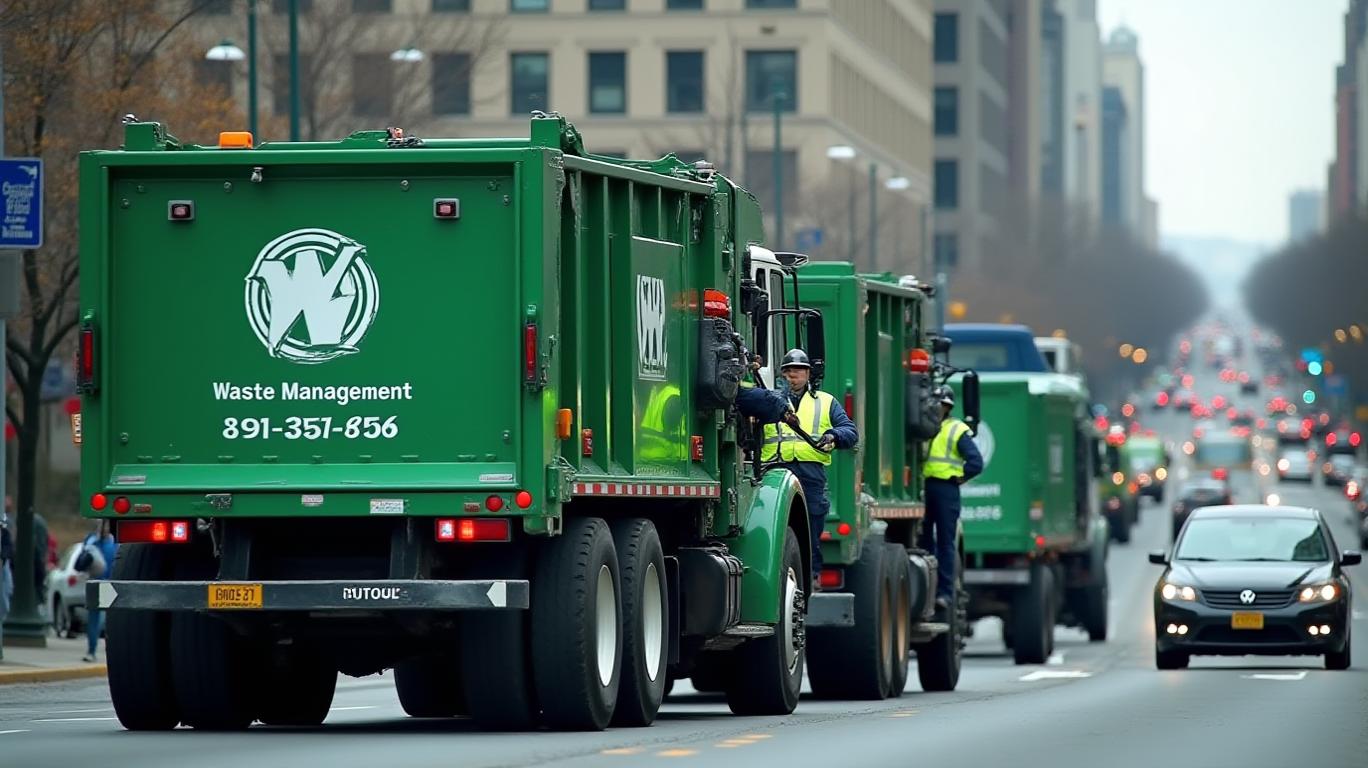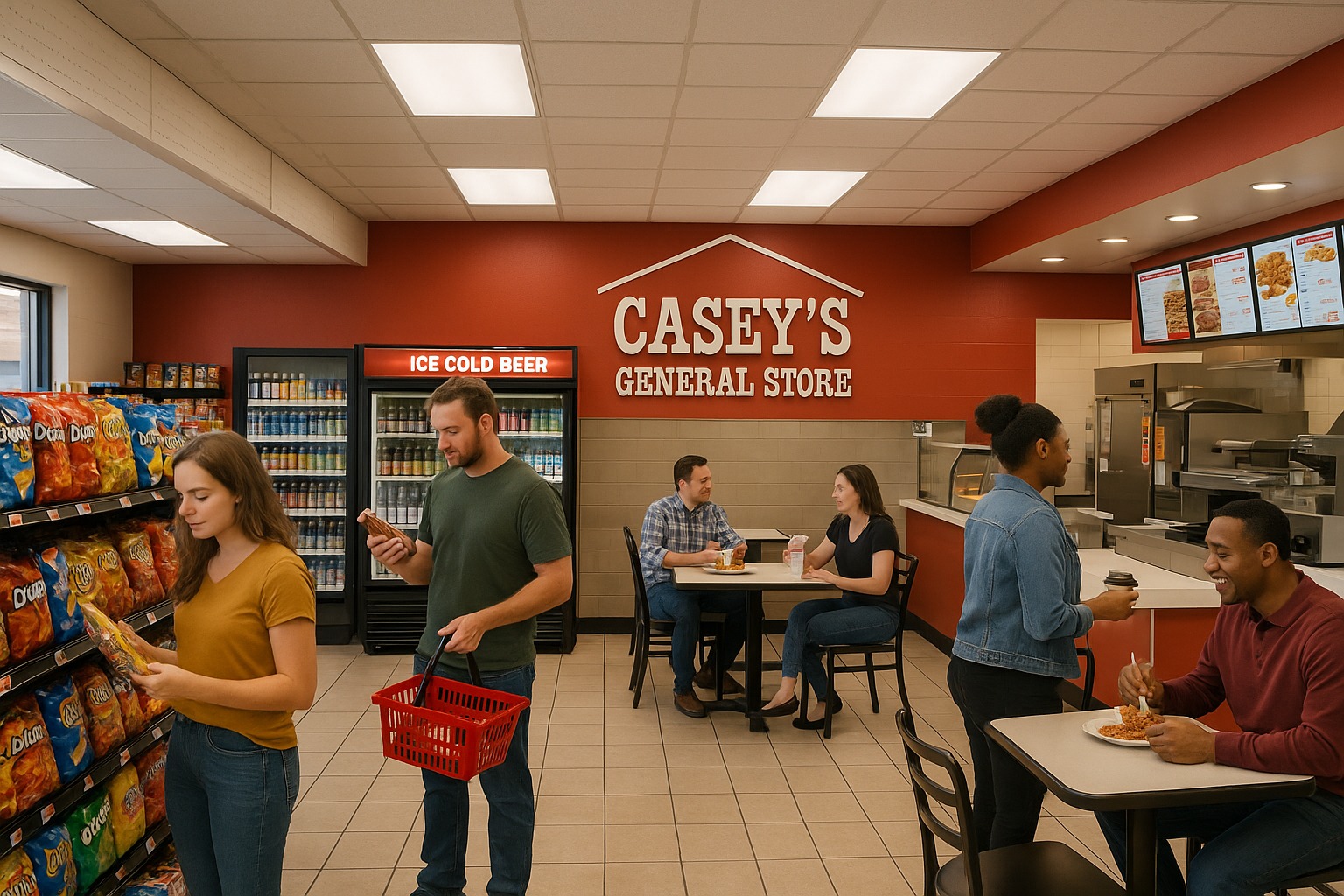Waste Management's Q1 Revenue Miss Reveals Integration Challenges, But Long-Term Outlook Remains Firm
Waste Management (WM), the nation’s largest trash hauler, reported a first-quarter revenue shortfall that sent shares lower, underscoring the complexities of integrating its $5 billion Stericycle acquisition and navigating macroeconomic headwinds. Despite year-over-year growth of 16.7% to $6.02 billion, the figure fell short of the revised analyst consensus of $6.12 billion. The miss, however, did not deter management from reaffirming its full-year outlook, a signal of confidence in long-term strategies despite near-term execution hurdles.

The Q1 Revenue Gap: A Confluence of Factors
The revenue shortfall stemmed from three key areas. First, volume declines in core operations limited growth. Workday volumes in the Collection and Disposal business were flat, as landfill gains offset strategic exits from low-margin residential collection. Winter weather in the eastern U.S. further reduced volumes by 0.3%. Second, the newly integrated WM Healthcare Solutions division—which contributed $619 million in its first full quarter—operated at a 12.3% margin, far below the Legacy Business’s 29.5% margin. This drag on profitability highlights the challenges of integrating a lower-margin business into a high-margin core. Third, recycling and renewable energy segments faced headwinds, including a 7% drop in Renewable Fuel Standard credits pricing year-over-year.
While adjusted EPS of $1.67 exceeded the revised $1.62 estimate, it fell short of earlier forecasts of $1.90, underscoring the volatility in earnings guidance. Net income also declined to $637 million ($1.58 per share) from $708 million ($1.75) in Q1 2024, driven by higher interest expenses and integration costs.
A Focus on Long-Term Levers
Despite the quarterly stumble, Waste Management’s management emphasized its commitment to long-term goals. CEO Jim Fish highlighted progress in cost discipline, including a 50-basis-point improvement in Legacy Business operating expenses and a 70-basis-point sequential margin gain in healthcare SG&A. The company also reaffirmed its full-year revenue outlook of $25.55–$25.8 billion and free cash flow target of $2.68–$2.78 billion, a 15–20% increase from 2024’s $2.2 billion.
The stock’s 1.78% post-earnings dip to $225.01 contrasted with its 9% YTD gain through regular trading, suggesting investors are distinguishing between short-term execution and long-term fundamentals. Cash flow metrics remain robust: operating cash flow hit $1.21 billion, supporting $475 million in free cash flow. While cash reserves dipped to $216 million from $414 million, this reflects integration costs and debt service rather than operational distress.
Risks and Opportunities Ahead
The key risks lie in execution. The Stericycle acquisition’s synergy targets—$80–$100 million annually—remain critical to offsetting the healthcare division’s margin drag. If achieved, these synergies could lift margins closer to Legacy Business levels over time. Additionally, Waste Management’s $128 million investment in recycling automation and renewable energy projects signals a strategic bet on sustainability trends, which could pay dividends as ESG standards tighten.
The company’s decision to exit low-margin businesses, while temporarily pressuring volumes, aligns with a focus on profitability over scale. This discipline is reflected in the Legacy Business’s consistent 30% operating margin, a testament to cost controls.
Conclusion: A Temporary Setback or a Strategic Inflection Point?
Waste Management’s Q1 stumble is best viewed as a speed bump in a broader trajectory of growth and transformation. While the revenue miss and margin pressures in its healthcare segment are legitimate concerns, the company’s reaffirmed guidance, strong cash flow, and disciplined capital allocation suggest resilience. The stock’s YTD performance and management’s confidence in synergies indicate investor patience with the integration process.
Crucially, Waste Management operates in a structurally defensive industry: waste management is a necessity, and demand is less cyclical than many sectors. With a dividend yield of 1.8% and a 10-year average free cash flow growth rate of 6%, the company remains a stable core holding for income-focused investors.
The April 29 conference call will provide further clarity on integration progress and margin improvements. Until then, the data points—$25.8 billion in projected revenue, $2.78 billion in free cash flow, and a 30% margin fortress in its core business—suggest that while the near-term path may be bumpy, the long-term outlook remains intact. For investors, the question is whether they are willing to tolerate short-term volatility for a stake in a sector leader with a proven ability to navigate disruption.










